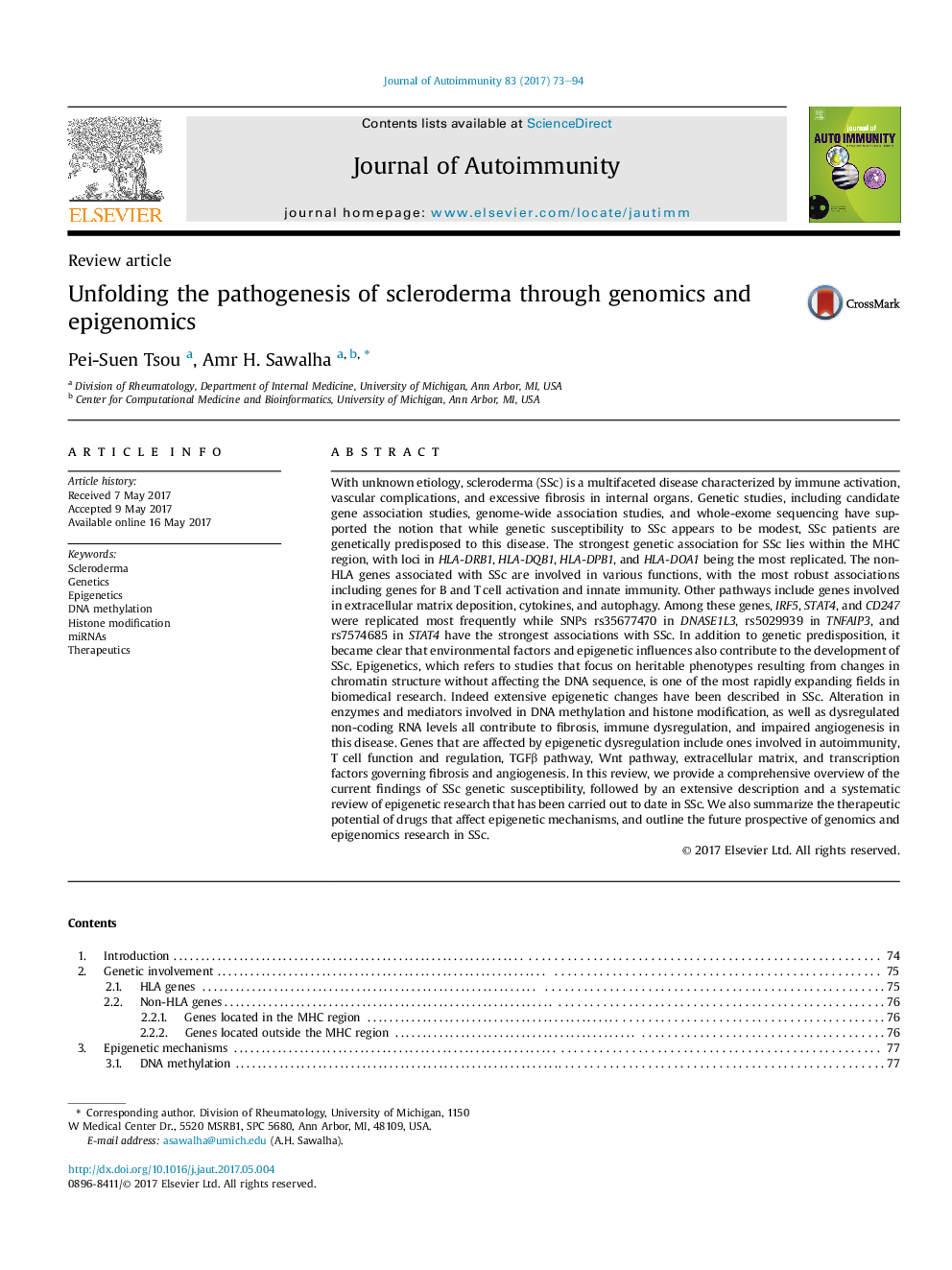| کد مقاله | کد نشریه | سال انتشار | مقاله انگلیسی | نسخه تمام متن |
|---|---|---|---|---|
| 5667845 | 1592266 | 2017 | 22 صفحه PDF | دانلود رایگان |
- Genetic susceptibility within and outside of the HLA have been replicated in scleroderma.
- Understanding the functional effects of genetic susceptibility loci in scleroderma remains a challenge.
- Epigenomic studies have provided novel insight into the immune, vascular, and fibrotic components of scleroderma.
- Studies focused on genetic-epigenetic interaction will help understand the complexity of scleroderma.
- Epigenomic marks and regulators might provide novel biomarkers and therapeutic targets in scleroderma.
With unknown etiology, scleroderma (SSc) is a multifaceted disease characterized by immune activation, vascular complications, and excessive fibrosis in internal organs. Genetic studies, including candidate gene association studies, genome-wide association studies, and whole-exome sequencing have supported the notion that while genetic susceptibility to SSc appears to be modest, SSc patients are genetically predisposed to this disease. The strongest genetic association for SSc lies within the MHC region, with loci in HLA-DRB1, HLA-DQB1, HLA-DPB1, and HLA-DOA1 being the most replicated. The non-HLA genes associated with SSc are involved in various functions, with the most robust associations including genes for B and T cell activation and innate immunity. Other pathways include genes involved in extracellular matrix deposition, cytokines, and autophagy. Among these genes, IRF5, STAT4, and CD247 were replicated most frequently while SNPs rs35677470 in DNASE1L3, rs5029939 in TNFAIP3, and rs7574685 in STAT4 have the strongest associations with SSc. In addition to genetic predisposition, it became clear that environmental factors and epigenetic influences also contribute to the development of SSc. Epigenetics, which refers to studies that focus on heritable phenotypes resulting from changes in chromatin structure without affecting the DNA sequence, is one of the most rapidly expanding fields in biomedical research. Indeed extensive epigenetic changes have been described in SSc. Alteration in enzymes and mediators involved in DNA methylation and histone modification, as well as dysregulated non-coding RNA levels all contribute to fibrosis, immune dysregulation, and impaired angiogenesis in this disease. Genes that are affected by epigenetic dysregulation include ones involved in autoimmunity, T cell function and regulation, TGFβ pathway, Wnt pathway, extracellular matrix, and transcription factors governing fibrosis and angiogenesis. In this review, we provide a comprehensive overview of the current findings of SSc genetic susceptibility, followed by an extensive description and a systematic review of epigenetic research that has been carried out to date in SSc. We also summarize the therapeutic potential of drugs that affect epigenetic mechanisms, and outline the future prospective of genomics and epigenomics research in SSc.
Journal: Journal of Autoimmunity - Volume 83, September 2017, Pages 73-94
